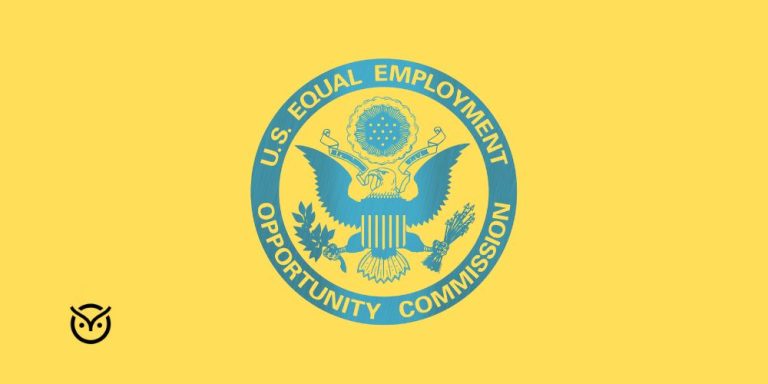Resume Search for Free: Why It’s Not Really Free for Recruiters

TL;DR
- “Free resume search” sounds tempting, but it often hides real costs.
- Recruiters lose hours chasing poor leads through free tools.
- Performance metrics (time-to-fill, quality of hire) can suffer.
- Employer brand may take a hit due to careless outreach.
- Hidden costs, compliance risks, and productivity loss add up fast.
You may have seen job boards or resume banks that claim you can search for free with no subscription, no fee, just click and go. For many recruiters, that sounds like a dream: unlimited access to candidate resumes at zero cost. But here’s the catch: that “free resume search for employers” deal often comes with trade-offs you don’t see until later.
In this blog, you will learn why free resume searches for employers are seldom truly free. You’ll learn how much time and effort get drained, how your recruiter performance metrics can worsen, how your employer brand risk takes a hit, and what smarter alternatives exist. Let’s unpack the hidden side of “free.”
What Does “Free Resume Search” Actually Mean?

When a platform advertises search resumes for free, what often happens is:
- You get limited access (only basic filters, a few results, or delayed updates).
- The “free” tier exists to funnel you eventually into paid upgrades or subscriptions.
- Data quality can be poor, with outdated resumes, duplicates, or poor formatting.
Sometimes vendors allow free searches but hold the deeper insights (contact info, full profile) behind paywalls. In effect, you’re browsing but not fully engaging.
Also, free tools often rely on cheap or ad-supported models. That means they collect data or run advertising over the resume pool. Your outreach may compete with third parties or automated systems, which can sometimes lead to a less-than-clean candidate experience.
Finally, “free resume search” can give you false confidence. You might assume you’re tapping a deep talent pool, but many relevant candidates stay hidden behind premium or private databases.
Why Does “Free” Resume Search Waste More Time Than It Saves?

You’d think “free” means faster. But here’s how things backfire:
- Filtering through noise. With free tools, you often see a high volume of irrelevant resumes. You waste time sifting, discarding, and rechecking.
- Poor candidate data. Many profiles miss updates, lack contact info, or come via broken links. You chase dead leads.
- Manual work multiplies. Without stronger filters, you’ll spend your hours on tedious manual vetting.
A few stats help show the scale of wasted effort: research suggests recruiters spend only 6 seconds per resume in an initial skimming phase. Another study shows 72% of recruiters review resumes for less than 2 minutes. In contrast, the “shocking truth” blog estimates that if a recruiter spends 30–90 seconds per resume, screening 500 resumes might take 8–25 hours.
When free tools give you 1,000–2,000 resumes to review per role, that inefficiency compounds drastically; you end up burning time, not saving it.
One more challenge: free tools often lack automated CV screening features. Without auto filters or AI scoring, every resume lands in your lap, unfiltered.
Can Relying on Free Searches Hurt Recruiter Performance Metrics?

Yes, and in meaningful ways.
- Time-to‐fill increases. Because recruiters waste time filtering bad resumes, they miss faster candidate matches, dragging out the hiring process.
- Throughput drops. A recruiter reviewing low-yield resumes achieves fewer placements per week.
- Lower quality of hire. If free tools miss top candidates or force you to settle for weaker matches, your metrics around retention, performance, and hiring manager satisfaction suffer.
- Cost per hire inflates. More hours chasing poor leads means your effective cost goes up even if the tool itself was “free.”
These metrics are closely watched in recruitment teams. If your KPIs show slower delivery, more backfills, or weak hires, your reliance on free resume searches might be part of the root cause.
How Does “Free” Resume Search Impact Your Employer Brand?

Beyond numbers, there’s a human perception cost:
- Generic, low-quality outreach. Because free tools offer minimal insight, your first messages might be templated, impersonal, or off-target. Candidate’s notice.
- Ghosting and non-response. If you contact candidates who are no longer active, outdated, or uninterested, you risk looking unprofessional.
- Bad candidate experience. Poor targeting suggests your recruitment team doesn’t value candidates’ time or fit.
Over time, that creates reputational damage. Candidates talk. On employer review sites (like Glassdoor, Indeed, or niche job forums), negative experiences around recruitment outreach show up. That hurts your employer brand equity.
Also, if your outreach seems automated or spammy, you risk being marked as a low-signal recruiter or blocked by candidates. That makes future recruiting harder.
How Much Productivity Do Recruiters Lose Chasing Free Tools?

Every moment spent wrestling with a cluttered database keeps recruiters from real human interaction. Rather than talking to skilled candidates and closing good hires, they end up trapped in repetitive work like fixing profiles, sorting resumes, and updating endless files. Over time, that grind eats away at focus and motivation, slowing down the entire hiring process.
With free resume search for employers, that number often spikes. Limited filters mean scrolling through hundreds of unqualified resumes, downloading one by one, and copying details into spreadsheets. Multiply that across multiple job openings, and suddenly your recruiters are drowning in routine clicks instead of strategic sourcing.
Remember the time a recruiter spends reviewing resumes? When that doubles, hiring slows and burnout creeps in. Productivity loss isn’t just a “cost of free”. It’s the reason your best recruiters start looking elsewhere.
What Hidden Costs Do Recruiters End Up Paying Anyway?

The phrase “free” hides a quiet list of expenses:
- Data verification. Most free resume pools lack validation. Recruiters spend time calling, emailing, and checking the authenticity of work that adds hours and salary costs.
- Tool switching. Free search sites don’t sync with ATS platforms, forcing manual copy-paste or CSV uploads. Each step means friction.
- Security exposure. Many “free” databases scrape public profiles or store resumes without consent. A single data misuse incident can cost companies millions in legal and compliance penalties.
- Reputation repair. Contacting candidates with outdated information or sending irrelevant outreach emails damages trust. Restoring that brand equity takes effort and paid marketing.
Is There a Smarter Alternative to “Free” Resume Search?

Yes, but today many AI hiring tools already bring verified resumes, smart matching and tracking in one place. They cut down search time and make results more reliable. Rather than digging through free sites for hours, recruiters can use these systems to spot candidates by skills, interest, and activity right away..
For example, tools with automated CV screening can pre-rank candidates against your job description, highlighting the best matches instantly. Combined with bias-control settings and real-time metrics, they deliver better hiring outcomes and preserve fairness.
If you’re using applicant-tracking software, look for systems that integrate with job boards or social channels and offer advanced filters like location radius, salary range, or diversity indicators. That’s how you stay compliant, fast, and human-centered at once.
Bonus tip: keep your content clean. Audit CV keywords to avoid filtering out great candidates by mistake. Generic buzzwords or overly complex jargon confuse both AI and humans.
What Legal or Compliance Risks Do Free Resume Searches Carry?

Free doesn’t always mean safe. Many “open” resume libraries gather data without meeting consent or retention standards required by privacy laws such as the GDPR or the UAE Data Protection Law (2021). Using or storing such profiles without explicit permission can expose your organization to penalties.
Free tools also rarely provide audit trails, meaning you can’t prove where a resume originated or whether consent was granted. If a candidate files a complaint, HR has no evidence to defend its process.
Smart recruiting platforms now include built-in consent management, anonymization, and region-specific data storage. If your tool doesn’t, it’s time to reconsider what “free” is truly costing your legal team.
Conclusion
The promise of free resume search for employers for free sounds great in a cost-cutting meeting, but the hidden price tag includes wasted hours, weak data, damaged brand perception, and compliance risk. Recruiters need more than just access. They need insight, accuracy, and automation.
Investing in a reliable sourcing system isn’t an expense; it’s protection for your reputation, your metrics, and your sanity. So next time a platform says “search resumes for free,” remember: nothing drains budgets faster than the illusion of free.






